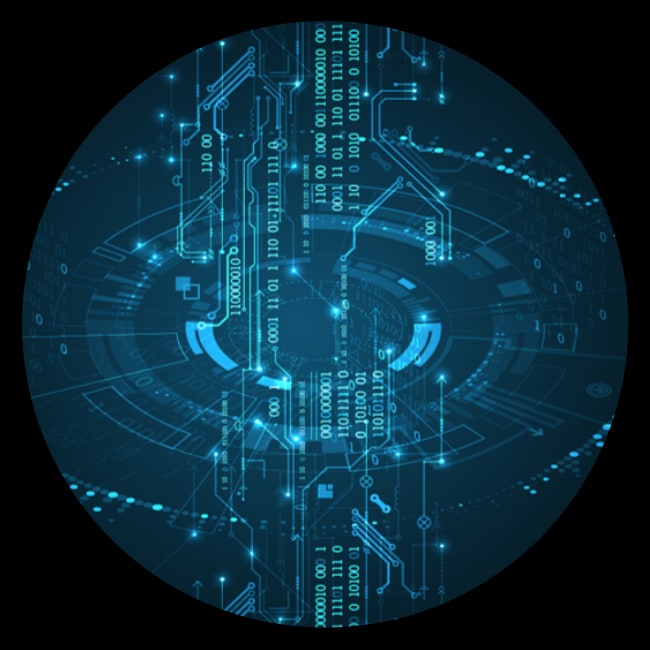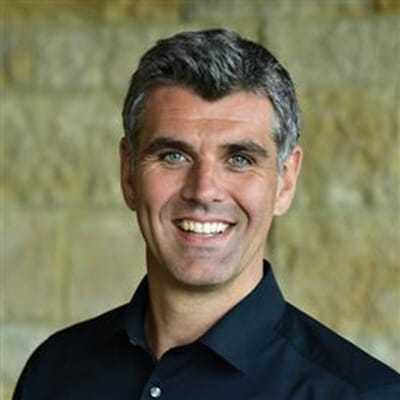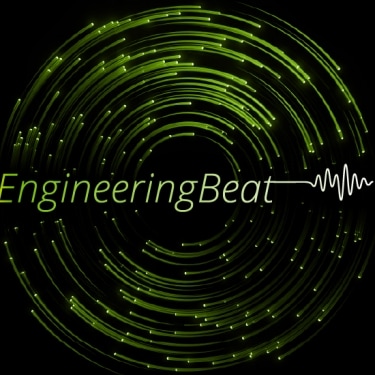Application Modernization & Migration success stories has been saved


The Maryland Department of Transportation (MDOT) wanted to modernize its mainframe-based Enterprise ERP Procurement System, called the Advanced Purchasing and Inventory Control System (AdPICS) to modern technologies and user experience.
The challenge
AdPICS was deployed in 1994 on a mainframe using COBOL and had been highly customized over the past multiple decades to meet the ever-changing needs of MDOT’s core businesses (Transit, Highways, Aviation, Ports, and Motor Vehicles).
The solution
Deloitte’s solution approach involved delivering a redesigned and modern user experience, through integrated work streams for functional subject matter specialization, automated code conversion (COBOL to C#), data migration (DB2 Mainframe to DB2 Windows), human-centered design, front-end UI/UX development, API integrations, intelligent automations, and many feature-rich capabilities.
The results
By combining Deloitte’s domain experience, with human-centered design methods, and the innoWake™ solution capabilities, MDOT has been successful in migrating from the mainframe to open standards-based architecture and modern system in 15 months. The modernized system (called EPICS) is used by MDOT to procure over $2 billion in goods, services and building construction, maintenance, and renovations annually.


A nationally recognized hospital expands its cloud footprint to improve patient care and employee experience
The challenge
An academic hospital set out to improve patient care. At the same time, the annual costs of its mainframe platform were approaching $1 million. Simplifying IT became a priority, with the goals of more efficient operations, greater stewardship of data, and better employee experience.
The solution
Offering low total cost of ownership and scalability, cloud emerged as an obvious choice. Mainframe and healthcare specialists began by analyzing all 54 applications and 53 databases. Deloitte then developed a roadmap to retire each mainframe asset while adhering to retention policies. Next, Deloitte guided the migration, making historical data available via cloud apps.
The results
Standing to save 95% on costs, the hospital can now focus more resources on patient outcomes. Essential data is readily available on cloud apps as well as for regulatory and reporting needs. Finally, an expanded cloud footprint supports rapid innovation.


The challenge
Supporting more than 177,000 children and parents annually, the Child Support Enforcement Division (CSED) of the New Mexico Human Services Department (HSD) wanted to modernize its more than 20 years old Child Support Enforcement System (CSES). The CSES was using older technologies (CA Gen, COBOL) with hundreds of mission-critical batch jobs and interfaces on its mainframe. CSES was the last remaining major application on the shared Department of Information Technology (DoIT) Mainframe platform and hence had to absorb most of the rising operational costs of the platform. Another challenge? It was increasingly difficult to find staff with expertise in legacy coding languages.
The solution
Using the platform-agnostic Application Modernization (AppMod) transformation solution powered by innoWake™, Deloitte transformed the legacy system to be Java code using an Oracle database while maintaining one-to-one functional equivalency with the legacy mainframe solution.
In addition, in alignment with HSD’s intent to completely move away from on-premises infrastructure, the solution was deployed to AWS Cloud. This opened additional opportunities to further modernize the CSES incrementally, based on business and IT priorities such as financial system distribution rule changes and integration with the future target low-code/no-code platform. With the transformation, automated DevOps processes were introduced, facilitating continuous integration and delivery. The new solution is designed for high availability and is secure, automatically distributing incoming traffic across multiple Amazon EC2 instances and multiple availability zones. Plus, it can scale as needed when the workload increases in the future.
The results
The New Mexico Human Services Department has been extremely pleased with the smooth go-live in early 2022 as well as the performance and efficiency of the migrated application. With minimal training required for business users and familiar business logic in the code for developers, the department maintenance and operations team, which consists of both legacy and Java developers, is ramping up quickly to own the code for the refactored online and batch jobs. The refactored system also decreased operating costs by leveraging leading hyperscalers (AWS), an expanded pool of personnel who could support the system, and by setting up a strong foundation for future incremental modernization based on business priorities and needs.
In the words of the department’s Information Technology Division technical lead, Lisa Jaramillo, “Deloitte is now a part of the CSES family, thanks to our joint team’s hard work, patience, and kindness throughout the transformation.” New Mexico Human Services Department Chief Information Officer Sean Pearson also commented on this transformation experience as “an example of successfully implementing technology to support our customers and workforce in line with our strategic goals. This has been one of the smoothest implementations in my 20-plus-year career in state government.”


The challenge
A financial services company with various lines of business was looking to accelerate the journey of its mainframe into AWS cloud. The retail side of the business had been undergoing a modernization effort across its portfolio but was looking for a strategic partner that could accelerate the modernization beyond the organization’s capability. Priorities included aligning on a transformation strategy and road map; completing a holistic analysis of application and data (including a decomposition analysis); exploring opportunities to scale design and development using tools, accelerators, and skills; steering and coordination of all ongoing workstreams; and finally, solving for the transition state, including requirements around sync-up with recordkeepers, and legacy reporting infrastructure.
The solution
Deloitte was selected to help the organization advance a multiyear application modernization journey, with an end goal of retiring the entire mainframe. The year-one approach was twofold. One stream was working together with the cloud practice team to modernize the consumer APIs and help resolve the change data capture issues the company was facing with its already ongoing approach. The second stream was core data modernization, which took care of migrating the data from Db2 into the cloud and modernizing all data consumers and producers. This included batch processing, data lake, and third-party systems integration as well as APIs.
The collective goal was to iteratively identify and modernize domains of the legacy system. As a proof of concept, one domain was selected to modernize according to the target-state architecture, which Deloitte had help define. Deloitte and the client collected learnings and defined blueprints and guiding principles so they could scale up and modernize 50% of the client’s brokerage functionality.
The results
The milestones accomplished in year one have set the foundation for a complete modernization and decommissioning of the company’s mainframe. The Deloitte team resolved data consistency issues and built new APIs to enable front-end modernization for 75% of the website. The team also modernized the brokerage account domain by building a cloud-native solution that consisted of APIs, batch modernization, recordkeeper integration, event-driven architecture, and migrated data to cloud datastores.
Deloitte is poised to continue to modernize the rest of the domains and retire the company’s mainframe with a complete production rollout that includes decommissioning abstraction layers and Db2 for selected domains. As a result, the financial services organization is on an accelerated path to application modernization.


The challenge
The New Mexico State Land Office had an outdated revenue processing mainframe that lasted long after its expected shelf life. ONGARD, the state’s oil and gas royalty revenue processing system, was decades old, overly complex, and it ran primarily on COBOL. The agency wanted to modernize for a while, but a mixture of barriers stood in the way.
The solution
The State of New Mexico Land Office selected Deloitte Application Modernization to transform its revenue processing system. The collaboration began with a low-risk, two-step approach to assess the existing technology environment while shifting relevant functionalities to a new, open platform—establishing a solid foundation for continued incremental improvements.
The results
Deloitte helped the State of New Mexico Land Office achieve results quickly and efficiently. The transformation project addressed several of the organization’s resource and technology risks, along with the cumbrousness of system maintenance and enhancements required by changing business needs if the agency remained on the mainframe. We used innoWake’s automated tool to transform more than 1.3 million lines of mainframe COBOL to .NET. We also migrated more than 233 screens, 79 batch jobs, and 250 z/OS DB2 tables to a modern relational database. This automated, low-risk approach resulted in minimum impact on both the end user and daily business flows. This successful first step also enabled SLOs to perform much desired functional enhancements currently at their own pace.


The challenge
The Office of Recovery Services (ORS), a division of the Utah Department of Human Services (DHS), wanted to modernize their 25-year-old Office of Recovery Services Information System (ORSIS) Child Support system. The ORSIS Child Support system was deployed on a mainframe platform using the COBOL computer programming language. The existing technology was limiting ORS’s ability to change its business processes and scale. In addition, the maintenance was expensive, and it was challenging to find staff who understood the technology.
The solution
Deloitte helped the ORS address their challenges by developing a solution that included automation transformation, cloud deployment, and automated DevOps and infrastructure management. Using the Application Modernization Transformation solution powered by innoWakeTM, Deloitte transformed the COBOL-based mainframe application. The result of the transformation was deployed in AWS GovCloud, logically isolated by Amazon Virtual Private Cloud (VPC). The new solution uses Jenkins automation server for building and deploying code and facilitating continuous integration and continuous delivery, making the deployments easier and more reliable.
The results
By taking advantage of an AWS and innoWakeTM solution, the ORS has been able to achieve an increased speed of processing to over 600K transactions per day, reduced infrastructure procurement and setup time, created easier augmentation of new developers, and improved batch performance enabled by horizontal scaling.


The challenge
A broadcast company wanted a pathway off their mainframe to reduce costs, release itself of vendor lock-in and reduce the risk of running legacy applications that no one knew how to maintain.
The solution
Using Deloitte’s innoWakeTM Transformation hybrid solution the applications were migrated using an automated approach.
The results
The project resulted in the decommissioning of the mainframe, all 18 applications, consisting of 3 million lines of code, running in the new open Java platform without disruption, and the legacy development teams continuing to maintain and modernize the applications.


The challenge
A financial services client faced what many companies face, current legacy code which is no longer meeting its business needs. The client faced several business challenges as they set out to modernize the application, including an unknown upgrade strategy or road map, undocumented business processes, and a need to understand the technical ecosystem before making decisions on how to move forward.
The solution
The advanced automated analysis and code abstraction capabilities in Deloitte’s innoWakeTM Discovery and Mining hybrid solutions delivered deep understanding of system assets and how an application executes business processes through code.
The results
A proof of concept was conducted for the COBOL programs which resulted in demonstrating Deloitte’s mining tools were able to expedite business rule; business rule extraction and translation within the COBOL application; and analysis and annotation of the current-state rules and creation of sample user stories for illustration.


The challenge
A telecom company faced increasing mainframe costs and had limited visibility into application code and documentation. They wanted to migrate applications to a cloud platform and take advantage of the flexible consumption model, simplified maintenance, and capabilities of a modern platform.
The solution
Deloitte proposed a migration planning and implementation approach using Deloitte’s Application Modernization and Migration tools that helped with an accelerated, efficient way to transform their legacy enterprise applications to reimagine and rearchitect into the cloud.
The results
The client was able to move forward with its business case and road map with a greater understanding of its portfolio and migration options and greater confidence in its ultimate success.


The challenge
With hundreds of employees and millions of registered vehicles to account for, a state department of motor vehicles naturally relies on high-volume information systems to do its job. In one of the largest states, many of the systems the DMV relied upon were out of date and out of sync with each other—including a 20-year-old system coded in ADABAS/NATURAL and COBOL with a Java Swing point-of-sale application that handled registrations and titles.
Age alone doesn’t make a system unworkable. But, in this case, the multiple complex platforms had become costly to maintain. They were inflexible. And they didn’t support the agility and analytics operations the department needed to develop. The DMV needed to modernize to a common architecture to meet stakeholder demands.
The application modernization approach
Faced with declining performance but unwilling to take on operational risks and saddle taxpayers with the cost of a ground-up rebuild or customized package implementation, the department chose Application Modernization. This process focused on keeping what works and spending effort on the areas requiring improvement. To get there, the technology required modernization first. Targeted improvements with demonstrable ROI would let the department retain its core systems while also building on those systems’ functionality by replacing, or “refactoring,” dated code with modern code.
Deloitte and innoWake worked with the DMV to map out an incremental approach to modernizing the systems required to process registrations and titles. First, the team prioritized the real-world needs the upgraded system had to handle: service enhancements, legislative changes, ad hoc reports, and other business needs. They determined how much effort, time, and resources the necessary changes would require, and they defined the roles and responsibilities of the team that would carry them out. Only then did they develop a release schedule for the progressive changes to be implemented.
The application modernization process
In the first year of the project, 10 scheduled releases unveiled different stages of improvement. The first application modernization pilot was ready for system testing in only six weeks. This quick demonstration of improvement was a tangible outcome that helped the DMV show governing stakeholders the progress that was being made.
The project refactored millions of lines of code to a new Java-based platform. It updated more than 700 screens, 3,000 batch jobs, and 120 ADABAS Database System files. Core mainframe data structures were refactored from ADABAS to a relational database, which boosted enterprise reporting capabilities. Other technologies, such as PL/1, Assembler, and COBOL, were also migrated to the new Java-based platform and established a common enterprise architecture.
The results
In IT terms, the DMV’s Application Modernization project met or surpassed all technical objectives. But “IT for IT’s sake” is not the reason organizations invest in a process like this. As a result of the process Deloitte helped implement, the department has realized a number of tangible business benefits:
Enhanced customer-centric capabilities
Before, users could search for a registration by vehicle identification number (VIN) but not by the owner’s name or address. Using the new modern Java-based architecture and modernized screens, the refactored system allows DMV employees to search by name, receive search results, select the person, and even drill down to view additional details. To achieve this, the legacy business code was refactored to modern Java code, and new queries were added to support the search-by-name functionality—again, keeping what worked and adding what was needed.
Implementation of legislative changes
The state enacted a single-sticker system that replaced separate inspection and registration stickers—but on the DMV’s old platform. As part of the phased modernization, the upgraded platform incorporates the required changes to business rules, fees, and the renewal notice sent to motorists. Because refactoring is fully automated, our technology allowed these changes to be made in the legacy environment and refactored to Java as they were implemented by the DMV.
Automation of business processes
The DMV’s legacy core system relied on imaging and indexing paper forms. It even acquired some data via a “screenscraping” tool that was no longer supported. Application Modernization replaced those functions with an automated FTP program that eliminated human intervention while providing data validation and error handling.
Enhanced agency reporting
The DMV wanted the first year of modernization to enhance its abilities to deal with point-of-sale fraudulent transactions and financial reporting. Deloitte used the IBM Cognos reporting platform to condense more than 1,000 legacy reports primarily written in COBOL into 27 customizable, parameter-based reports, easing the overall maintenance load and directly providing the business flexibility to the end user. As a result, the DMV has been able to address losses from theft or misconduct, and it has remedied decades-old deficiencies in the way it accounts for money collected at branch offices.
Improved system reliability
The DMV’s system was moved from a mainframe to a modern, scalable, Linux-based environment that allowed the department to incorporate opensource third-party products, to migrate to the cloud, and to set up its application lifecycle management structure in a way that would permit iterative, agile releases.
Modernization inventory
What modernization needs will emerge next for the department? This project addressed the future by developing a modernization inventory to identify segments of the refactored code that should be considered for streamlining— such as repetitive code segments that might be consolidated into reusable components, or business rules that could be extracted into a rules engine for simplified configuration. The contents of the inventory are prioritized and added to upcoming Agile-based release schedules.


The challenge
A large European insurance company with operations in more than 100 countries had embarked on an enterprise-wide transformation to help it achieve strategic growth. But as the insurer began to plan the project, it faced a problem: Its claims-processing application could not be migrated to a flexible, open-systems platform. The software ran COBOL, a 59-year-old programming language that, while used by many large businesses, can be difficult to integrate with modern programming languages, database software, and Java environments.1
What’s more, the insurance company was having difficulty finding IT personnel with experience in legacy code languages like COBOL, making the antiquated system increasingly costly to support. In part, that’s because workers fluent in old languages like COBOL are in short supply as they begin to retire. At the same time, most universities no longer offer courses on legacy code. In many cases, this shrinking supply of skilled workers has resulted in high salaries for legacy coders and database administrators—which in turn has increased the costs to support outdated applications.
The insurer also needed to update its claims-processing application without altering the user interface and functionalities to minimize disruption for end users and help ensure that developers and database admins did not face a steep learning curve. More importantly, the company needed to retool the applications without system downtime or interruption to operations.
The application modernization approach
The insurance firm engaged Deloitte’s Application Modernization services to help it plan and implement an end-to-end modernization program of its legacy claims processing application.
The project began with a Discovery assessment that analyzed the COBOL code, mapped interfaces to other applications, and identified mutual dependencies. The Deloitte team worked with the company’s IT staff to identify numerous applications that would be affected by the refactoring.
The Discovery work resulted in a defined scope, duration, and project implementation plan for the modernization project. Separately, the Deloitte team carefully reviewed the roles and responsibilities of the firm’s business departments and suggested revisions that could improve process efficiency.
Based on this assessment, Deloitte’s Application Modernization team recommended a migration strategy based on automated refactoring, a technique that uses software to automatically replace old code like COBOL and Natural with newer languages such as Java and .NET.
The modernization project would employ Deloitte’s Transformation tools, a component of our Application Modernization powered by innoWake™ suite of solutions. The Transformation tools can convert all legacy code into modern languages with full accuracy, a process known as 100 percent automated refactoring. And because the new code mirrors legacy programming, both legacy and Java developers can easily read and maintain the migrated application. This approach preserves the functionality and interfaces of the existing application while building a foundation for future modernization.
The application modernization process
The Transformation project comprised three major initiatives: migrating the COBOL code to Java, transferring the data from Adabas to Oracle, and updating the mainframe operating system (OS) to Linux from BS2000.
The Deloitte Application Modernization team used its proprietary innoWake tools to refactor the legacy code. The tools simultaneously migrated the legacy and refactored code to the mainframe and to the new target architecture. This allowed normal maintenance of code and data to proceed without a code freeze or system downtime, minimizing disruption to the business.
The next step was to fully automate the code migration and the Job Control Language (JCL) implementation. This approach helped create a smooth transition for legacy developers, who could continue to work with COBOL using the Eclipse integrated development environment (IDE).
To verify system functionality, the Application Modernization team created more than 200,000 record test cases that were used for regression and performance analysis of the new engine. This very high number of test cases not only helped speed implementation, but also delivered insights into the application and helped build confidence that the software would perform well in production.
The results
To help the insurer prepare to use, maintain, and operate the new version of its claims-processing system, the Deloitte team designed a training program that began early in the project.
Rapid implementation, minimal training
Within six months, the team conducted Java toolchain workshops for legacy developers, and by go-live, all developers had been fully coached in the use of the new code and tools. Because the interface and functionality of the application remained the same, claims processors quickly accepted the updated software, with minimal training required.
Directly after go-live, the company’s IT staff assumed full management and operations of the application. Almost immediately, the insurer began developing and integrating new functionalities using Java code.
Identical functionality and interface
When the 28-month modernization project concluded, the insurance firm had a highly integrated version of its claims-processing application that provides the same interface and functionality as the legacy version.
The modernization project was completed on time and on budget, with no code freeze or downtime, a critical requirement for the insurer. “Everything works just as it did before refactoring, but the Java environment makes it easier to integrate operational standards and align with best practices,” said Mathias Jacobi, project manager, Deloitte Consulting LLP. “End users did not notice any changes in the application. We promised nothing would change in interfaces and functionality, and from a user standpoint, nothing did change– even though everything has changed under the hood.”
A solid foundation for the future
The refactored system is now hosted on an open-system platform using modern technologies and supporting tools. All core functions of the application backend are now available as RESTful Web services, making it easier to share business functions of the server. As a result, new functionality is easier, faster, and less complex to develop and integrate.
Finally, the modernization will decrease operating costs because the insurer will no longer have to maintain the mainframe after it is switched off next year. That’s expected to save millions of dollars a year on systems maintenance and operations.
Beyond an updated claims processing application that is compatible with the insurance firm’s global open-system platform, the software modernization created a solid foundation for future enhancements to meet evolving business and technology requirements.
Refactoring by the numbers
The project refactored 1.2 million lines of COBOL code and 1,400 objects. Data refactored included 22 million claims, 2.5 billion database records, 250 tables, and 200 sequential and ISAM files.
Deloitte innoWake tools used: development, enabler, and operations
1The National Museum of American History, COBOL, accessed April 23, 2018


The challenge
The Idaho Department of Health and Welfare relied on an old and inefficient mainframe application to serve the needs of some of its youngest citizens. Its core child support application was housed on a 22-year-old mainframe that could not keep pace with the increasingly digital needs of the state’s citizens.
The reason? The Idaho Child Support Enforcement System (ICSES) mainframe was not compatible with essential new technologies like cloud and mobile computing. And that impeded the department’s ability to enhance its services to 385,000 children and adults.
Legacy code was at the core of the problem. The child support application ran on a combination of decades-old COBOL and Natural source code. As a result, implementing new services was a cumbersome and complex undertaking. “Our existing mainframe was unable to implement rapid customer-centric change, and the resources needed to make changes were very limited,” said Greg Kunz, a deputy administrator in the division of welfare within the Idaho Department of Health and Welfare.
Department leaders understood that providing digital information to taxpayers often requires a new mindset, one in which citizens are treated as customers rather than constituents. This approach was the heart of a “smarter government” strategy that views healthcare as a connected and holistic service for citizens, according to Kunz.
In addition to a new way of thinking, delivering outstanding service would also demand up-to-the-minute enterprise technologies and a retooling of business processes.
High costs and inefficiencies
The Department of Health and Welfare faced significant challenges that are typical among organizations that rely on aging mainframes and legacy applications. Vintage code prevented the department from implementing new services to address evolving business needs. For instance, it needed to enhance digital capabilities to communicate with citizens via text and email. This could easily be achieved using a Java platform to create Web services, but the legacy code wasn’t compatible with modern languages.
The high cost of maintaining the mainframe was another factor. Supporting a mainframe and legacy applications requires employees with legacy code experience. In the state of Idaho, as elsewhere, the pool of employees fluent in legacy languages is drying up as workers retire. As they leave, experienced employees take with them years of knowledge of the systems, including undocumented updates over the decades.
Given these challenges, it’s not surprising that the agency had weighed for several years options to modernize its child support system. In fact, the IT department had earlier attempted to implement a modernization solution that would emulate the mainframe on servers, but the initiative was eventually scrapped. The department simply did not have the know-how and experience to modernize on its own.
The application modernization process
In a meeting with the Department of Health and Welfare, Deloitte proposed an application modernization strategy that uses software to automatically refactor, or replace, old code like COBOL and Natural with modern languages like Java and .NET.
Deloitte’s Application Modernization powered by innoWake™ suite of solutions can convert all legacy code into modern languages with complete accuracy, a process known as 100 percent automated refactoring. The software converts each line of legacy code to equivalent programming instructions in modern languages. This approach preserves the functionality and interfaces of the existing application while building a foundation for future modernization initiatives.
Deloitte’s Application Modernization team collaborated with department stakeholders to assess the agency’s technology ecosystem, and then employ an incremental approach to refactor the ICSES system.
Using a parallel production pilot, we helped the department refactor 100 percent of its code and migrate data to a Java platform—without data loss or code freeze.
The results
The Transformation project was completed in just 18 months, a rapid turnaround that was a critical requirement for the department.
“Idaho required a fast implementation, and one of the reasons they selected Deloitte was our ability to meet the deadline while delivering a completely automated refactored system,” said John White, Deloitte Consulting LLP principal and leader of the organization’s National Child Support Services practice.
Deloitte’s team accelerated implementation through an early roll-out of new screens to end users to facilitate familiarity with the system. During the process, Deloitte worked with the department to quickly identify and resolve issues with the refactored application.
More flexibility with Web-based tools
After refactoring, the Department of Health and Welfare is now set to use flexible Web-based tools to build new services on the Java platform. For instance, it has already created a Web tool that automatically generates a notice when an individual has not submitted a child support payment.
The department also employed Web services to more easily share data with its 50-plus third-party business partners. These new tools enable employees to instantly access information from internal and partner databases, which shortens the time that citizens wait on hold during calls for information about their accounts.
Lower operating costs
Finally, the initiative also decreased operating costs because the department no longer has to maintain the mainframe after applications and data were migrated to the Java platform.
A foundation for innovation
The Department of Health and Welfare is now starting to implement current technologies that will achieve its core mission of smarter government services. Over the next 18 months, it plans to build applications and capabilities on top of its modern digital foundation.
These include development of additional Web-based tools designed to improve worker efficiencies and communications with citizens. The department also plans to overhaul its financial-management system and automate capabilities for its workload- and caseload- management functionality
“What Deloitte gave us was this incredible tool that got us here in 18 months at a cost that was substantially lower than rebuilding from scratch,” Kunz said. “We think it’s going to be one of the least-expensive modernization efforts ever of a child support system.”
Refactoring by the numbers
The project refactored 1.7 million lines of Natural and COBOL code, 2,800 Natural programs, 1,100 online screens, 50 interfaces and 180GB of Adabas files.
Deloitte innoWake tools used: development, enabler, and data


The challenge
When the state of Colorado implemented its Automated Child Support Enforcement System (ACSES) in 1986, it was a cutting-edge mainframe application built on the Natural programming language.1
For the next three decades, this mission-critical system served the Colorado Department of Human Services (CDHS) well; it processed more than 5,000 child support payments a day, totaling $500 million a year. 2
Although the legacy system remained reliable, it became increasingly inefficient, as well as time-consuming and costly to maintain. Operating costs continued to rise as experienced staff retired, leaving CDHS hard-pressed to find workers skilled in the legacy code on which the system had been built. What’s more, as those employees left, they took with them years of knowledge about the application, including system updates that hadn’t been documented.
The outdated ACSES mainframe also impeded CDHS’ ability to implement new functionality because it was difficult to integrate with modern technologies and solutions. This incompatibility not only prevented the department from deploying new technologies to meet its business needs, it also made compliance with ever-changing state and federal regulations increasingly cumbersome.
CDHS knew that its ACSES system could not be easily modified to create operational efficiencies that would enable the department to better serve 200,000 Colorado children and their parents. The legacy code needed to be migrated to a modern platform like Java and the existing Adabas data needed to be housed in a modern relational database- management system. The question was how to do so.
The most obvious option would have been to build a new system from the ground up, but CDHS knew it would take several years just to develop requirements. The department ultimately concluded the “rip and replace” option was too expensive, too high risk and too protracted.
CDHS leaders began exploring modernization options that would more quickly migrate legacy code to an open-system platform while retaining existing functionality and logic. This was crucial because the ACSES application contained a vast, 30-year reserve of highly valuable business logic. The department wanted to make sure that every single line of code and logic was replicated, and that all functionality was retained. They also wanted to include the remaining developers who had built, maintained, and updated the ACSES software over the years.
“Our legacy child support system contained nearly 30 years of dependable business logic and system refinements, and a primary requirement was that every line of this code is accurately converted and that all existing functionality be preserved,” said Craig Goellner, CSS Systems Director, Colorado Division of Child Support Services. “We also understood that our experienced developers had the institutional knowledge to develop and maintain the system, and we wanted to make sure that the migrated system could be maintained by these developers.”
Given these requirements, IT leaders determined that a migration of the application from the mainframe to an open- system platform would be the most efficient way to preserve logic and functionality. After migration, CDHS could then incrementally integrate ACSES with essential technologies like cloud, mobility, and data analytics.
The application modernization approach
While the migration approach seemed straightforward, CDHS knew that executing an overhaul of a mission-critical application would be complex and risky. They wanted an experienced and reliable team that could handle all aspects of the project—without relying on third parties. CDHS formed a selection committee and solicited RFPs, ultimately meeting with more than a dozen migration specialists.
One was innoWake International, Inc. (Deloitte Consulting LLP acquired innoWake International Inc., which is hereinafter referred to as “Deloitte.”) Deloitte’s Application Modernization services team demonstrated its automated refactoring offering, which accurately replicates 100 percent of legacy code like COBOL and Natural, to a modern platform like Java and .NET. The selection committee was impressed by the Java implementation of Natural code, which could be read by both Natural and Java programmers. In the end, they were convinced that automated refactoring would deliver effective, low-risk modernization without data loss and code freezes.
The application modernization process
CDHS engaged Deloitte to guide the transition of ACSES to an open- system platform using Deloitte’s proprietary automated refactoring technology and processes.
Working closely with state technology leaders, the Deloitte team used its Discovery product to perform a diagnostic assessment of the agency’s technology ecosystem to understand its codebase, complexity, and dependencies. This enabled Deloitte to chart a migration roadmap based on the specific priorities and needs of CDHS.
This Transformation project comprised two major initiatives: migrating 1.4 million lines of Natural code to Java and transferring more than 500GB of Adabas data to Oracle. To do this, we employed our Application Modernization powered by innoWakeTM software suite. The one-to-one refactoring tool converted each line of legacy code to equivalent programming instructions in Java, while retaining the functionality and interfaces of the existing application. It also preserved nearly 30 years of business rules and application refinements, a primary goal of CDHS.
When converted to Java, the code is very similar to the original Natural code, giving legacy developers access to the new development environment without the need for in-depth training. And, because all business logic and functionality was retained, the 600 users required minimal training.
Throughout the project, Deloitte and CDHS used a parallel testing model and automated test scripts to compare functionality, performance, and accuracy of the refactored system with the legacy application. The team also conducted user- acceptance testing to ensure that workers were comfortable using the new Web-based interface for ACSES.
The results
Deloitte delivered this low-risk, automated refactoring project under budget and on time—without disruption to CDHS operations. After this two-year initiative, the ACSES application was running smoothly on an open-system Java environment, with virtually no user impact and improved system performance.
CDHS no longer has to support an antiquated mainframe, saving the state time, resources, and millions of dollars in annual operating costs. Automated refactoring has also enabled CDHS to develop new services using agile, contemporary technologies that can be easily integrated with other enterprise systems and applications.
CDHS is now positioned to harness the power of flexible Web-based tools to build new services on its modern Java platform. Deloitte continues to work with the department to identify additional key functions of ACSES and other systems that can be enhanced for future-state innovation.
Refactoring by the numbers
The project refactored 1.4 million lines of Natural code, more than 8,000 Natural programs, 500GB of Adabas data, 250 interfaces, 2,000 JCL batch jobs, and 800 online screens.
Deloitte innoWake tools used: development, operations, enabler, and data
1The National Museum of American History, COBOL, accessed April 23, 2018
2Policy & Practice, The Best Route to Take, December 2016






